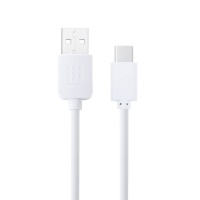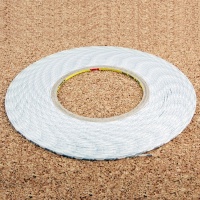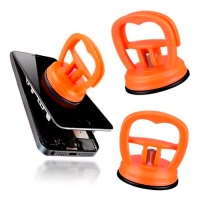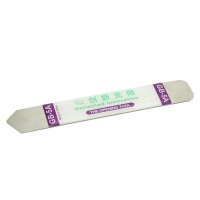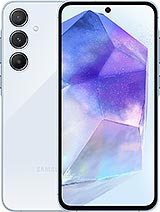 Repair parts Samsung Galaxy A55
Repair parts Samsung Galaxy A55



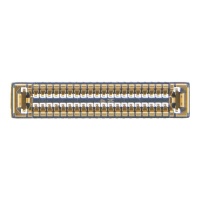
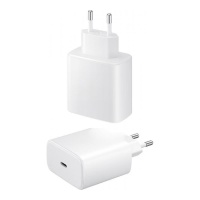
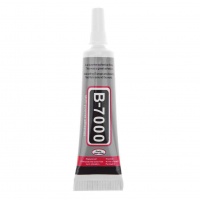
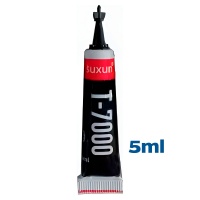
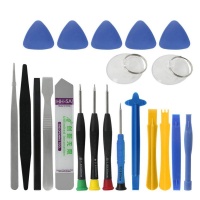
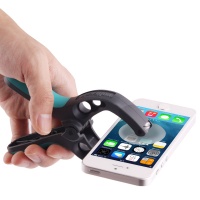
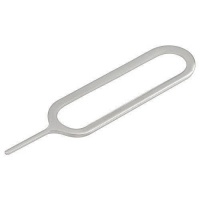

Receive it on wednesday 10 de december


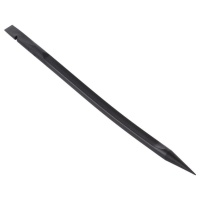
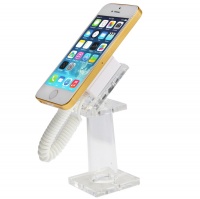
Samsung Galaxy A55: Complete Guide to Spare Parts and Repairs for Your Mobile Phone
Welcome to the definitive guide to spare parts for your Samsung Galaxy A55 at iLevante.com! If your device has suffered a mishap or simply needs a new component to keep it working like new, you're in the right place. Repairing your mobile phone can not only be a more economical option than buying a new one, but also a more environmentally sustainable decision. Throughout this article, we'll explore in detail the most common parts you might need, frequent problems, and how you can bring your Galaxy A55 back to life. Let's get started! 🚀
1. Samsung Galaxy A55: A Detailed Look at Your Device 📱
Before diving into the world of spare parts, it's essential to get to know your Samsung Galaxy A55 well. Understanding its features will help you better comprehend why certain spare parts are specific and what you should look for to ensure a successful repair. This model stands out for its balance of performance and design, but like any device, its components may require attention over time.
Key Features of the Galaxy A55 Relevant to Repairs
- Design and Build: The Galaxy A55 features an elegant design with a flat metal frame that provides an intuitive grip and a premium aesthetic. Its back is constructed from Corning® Gorilla® Glass Victus®+, the same durable material that protects its front screen. Its dimensions are 161.1 x 77.4 x 8.2 mm and it weighs 213g. An important aspect is its IP67 dust and water resistance certification. This feature is valuable, but it's crucial to note that any repair involving opening the device could compromise this seal if not performed with the appropriate tools and adhesives. The robustness of its original materials, like Gorilla Glass Victus+, means that spare parts, especially the screen and back cover, must be high quality to maintain the phone's durability and aesthetics.
- Screen: You'll enjoy a 6.6-inch Super AMOLED screen with $FHD+$ (1080 x 2340 pixels) resolution. This technology offers vibrant colours and deep blacks. Additionally, it has an adaptive refresh rate of up to 120 Hz for a smooth experience and a maximum brightness of 1000 nits (HBM), making it easy to view even in direct sunlight. The quality of this original screen sets a high standard against replacement options.
- Battery: It incorporates a lithium-ion battery with a typical capacity of 5000 mAh, designed to offer good battery life. This battery is not easily user-removable, meaning its replacement requires opening the device. It supports 25W wired fast charging.
- Processor and Performance: Inside, the Galaxy A55 houses the Exynos 1480 Octa-Core processor built on a 4nm process, offering capable performance for most tasks, games, and multitasking. It is accompanied by 8GB or 12GB RAM variants and internal storage options of 128GB or 256GB (UFS 2.1 in base models according to some sources, or UFS 3.1 in higher versions). Fortunately, storage is expandable via a microSD card up to 1TB.
- Cameras: The camera system is one of its strong points, with a 50 MP Wide main camera featuring Optical Image Stabilisation (OIS), a 12 MP Ultra-Wide camera, and a 5 MP Macro camera. For selfies, it has a 32 MP front camera. If any of these modules or the glass protecting them is damaged, it will be important to find spare parts that maintain the original quality to avoid losing photographic performance.
- Software: The Galaxy A55 comes with Android 14 and Samsung's One UI 6.1 customisation layer. One of the major advantages of this model is Samsung's promise to offer up to 4 years of major operating system updates and 5 years of security patches. This longevity in software support significantly increases the value of carrying out hardware repairs, as the phone will remain functional, secure, and updated for much longer.
The combination of high-end materials and IP67 certification suggests that repairs must be meticulous. For example, the use of Corning® Gorilla® Glass Victus®+ on the back cover makes it resistant, but its replacement can be more complex and costly than on mobiles with plastic backs, influencing whether a user attempts a DIY repair or prefers a technical service centre.
2. Why Repair Your Samsung Galaxy A55? Parts and Solutions Within Your Reach 🛠️
Opting to repair your Samsung Galaxy A55 is not only a smart decision, but also an environmentally responsible gesture. Many problems that seem like the end of your device's lifespan have accessible solutions through the replacement of specific components. At iLevante.com, we offer a wide range of spare parts so you can restore full functionality to your mobile.
Common Problems Requiring Spare Parts on the Galaxy A55
With daily use, it's normal for some components of your Galaxy A55 to suffer wear and tear or accidental damage. Fortunately, most of these problems are solvable:
- Screen Damage: This is one of the most frequent problems. It ranges from cracks and breakages due to drops, to dead pixels, colour spots, touch response issues, or, in the worst cases, a completely black screen.
- Battery Depletion or Failure: Over time, all batteries lose capacity. You might notice that battery life is significantly shorter, the phone shuts down unexpectedly, it doesn't charge correctly, or in more severe cases, the battery swells (which is a safety hazard).
- Broken Back Cover: Being made of glass (Gorilla Glass Victus+), a drop can cause cracks or complete breakage of the back cover.
- Problems with the Charging Port (USB-C Connector): Difficulty charging, intermittent charging, or a loose-feeling connector are symptoms of a damaged charging port. This is common due to the constant plugging and unplugging of the cable.
- Camera Faults: If your photos are blurry, the camera app shows errors, it doesn't focus, or the lens glass is scratched or broken, you may need a replacement part for the affected camera module.
- Audio Problems: If you can't hear ringtones, the multimedia speaker sounds distorted, or you can't hear the other person during calls (earpiece failure), these components can be replaced.
- Unresponsive Buttons: Physical volume or power buttons can get stuck or stop working due to wear of the internal mechanism or associated flex cable.
- Damaged or Lost SIM Tray: A small but crucial part. If the SIM tray breaks or is lost, you won't be able to use your SIM card.
The good news is that for most of these issues, quality spare parts are available that will allow you to continue enjoying your Samsung Galaxy A55. The frequency of problems like broken screens, degraded batteries, and faulty charging ports indicates a constant demand for these spare parts, which is why at iLevante.com we ensure we have good stock levels to meet your needs.
3. Screens for Samsung Galaxy A55: Complete Guide to Spare Parts and Replacement 📺
The screen is, without a doubt, one of the most vital and, at the same time, most vulnerable components of your Samsung Galaxy A55. An unfortunate drop or impact can render it unusable. Fortunately, a variety of replacement options exist on the market. Understanding the differences will help you make the best decision for your device and your wallet.
Types of Screens Available: Super AMOLED, OLED, AMOLED, Incell, TFT, and Originals
When looking for a replacement screen for your Galaxy A55, you'll encounter various technologies and qualities. It's crucial to understand what each offers:
- Original Samsung Screen (Super AMOLED): The screen your Galaxy A55 came with from the factory is a 6.6-inch Super AMOLED with $FHD+ (1080 \times 2340)$ resolution and a refresh rate of up to 120 Hz. This is the option that guarantees maximum quality in terms of colours, contrast, brightness, viewing angles, and, very importantly, full compatibility with the under-screen fingerprint sensor. If you're looking to restore your phone to its original state, this is the ideal choice, although it's usually the most expensive. Super AMOLED screens, like the original, integrate the touch layer directly into the panel, resulting in a slimmer design and superior touch response.
- OLED/AMOLED Screens (Aftermarket/Imitation): These screens use a similar technology to the original, where each pixel emits its own light, resulting in true blacks and intense colours. Within this category, you can find:
- Soft OLED: They are more flexible and therefore more durable and resistant to small impacts than Hard OLEDs. Their visual and tactile quality is very close to that of original screens. They are an excellent alternative if you're looking for a balance between quality and price.
- Hard OLED: They are more rigid and, consequently, can be more susceptible to impact breakage compared to Soft OLEDs. They are usually a slightly more economical option within the OLED range.
- Imitation OLED: This term is sometimes used to refer to third-party manufactured OLED screens that, while offering superior quality to LCD/TFTs, may not match the performance of an original OLED or a high-quality Soft OLED.
- Incell LCD Screens: This technology integrates the touch layer within the LCD panel itself, allowing for thinner screens than traditional LCDs. They are a considerably more economical option. They offer decent brightness and acceptable colour reproduction, but blacks tend to be dark greys instead of pure blacks, and their contrast is lower than OLEDs. Furthermore, Incell LCD screens typically consume more power than OLEDs, which could slightly affect your A55's battery life. Some Incell screen models for the A55 (sometimes marketed as TFT) can be a bit thicker than the original and, crucially, might not be compatible with the fingerprint sensor. They usually have a lower refresh rate, for example, 60 Hz, which you'll notice if you're used to the original 120 Hz.
- TFT LCD Screens: These represent the most basic and, therefore, the cheapest screen replacement technology. In general, TFT (Thin-Film Transistor) screens offer inferior colour quality, contrast, and viewing angles compared to AMOLED or OLED technologies. Like low-cost Incell LCDs, it's highly probable that TFT screens for the A55 will not support the fingerprint sensor functionality. They are the tightest budget option, but with the biggest sacrifices in terms of visual quality and potential features.
- "LED LCD" or "LCD" Screens: Occasionally, sellers might use these terms generically. "LED LCD" simply refers to an LCD screen that uses LED backlighting. If it's not specified as "Incell," it could be a more traditional, thicker LCD. It's important to remember that the Galaxy A55's original technology is Super AMOLED, so any "LCD" option will be a lower-quality visual alternative.
The wide variety of technologies and terms can be confusing. A user searching for "Samsung A55 screen" will find many options at very different prices. It's vital to understand that a cheaper screen almost always involves compromises on image quality, smoothness (refresh rate), and potentially the loss of features like the fingerprint sensor, an essential security and convenience feature for many.
When Do You Need to Change Your Galaxy A55's Screen?
The signs that your screen needs replacing are usually quite obvious:
- Obvious Physical Damage: Cracks, fractures, or chips in the glass are the most common cause.
- Display Problems: Black or strangely coloured spots, vertical or horizontal lines that don't disappear, constant flickering, a screen that stays white or completely black, or colours that look distorted or "washed out." Although "washed out" colours can sometimes be a perception or software setting, if it appears suddenly, it could indicate a fault.
- Touch Failures: Areas of the screen that don't respond to touch, "ghost touches" (the mobile performs actions without you touching it), or very slow or erratic touch response.
- Dead or Stuck Pixels: Small dots on the screen that always remain black, white, or a fixed colour, regardless of what's displayed.
Considerations for A55 Screen Replacement
When deciding to replace the screen, keep the following in mind:
- Quality vs. Price: Original or high-quality Soft OLED screens offer the best visual experience and durability but are more expensive. Incell LCD or TFT LCD screens are more affordable but entail sacrifices in image quality and sometimes functionality. The cost of an original Super AMOLED screen can be significant, so it's important to weigh whether the investment is worthwhile based on the phone's overall condition and its usage time.
- Fingerprint Sensor Functionality: This is a critical point. Many aftermarket screens, especially cheaper TFT or Incell LCDs, are not compatible with the Galaxy A55's under-screen fingerprint sensor. Always verify this compatibility before purchasing.
- Refresh Rate: The A55's original screen offers 120 Hz. Some cheaper replacement screens may be limited to 60 Hz, resulting in a less smooth experience, especially noticeable when scrolling through menus or in games.
- Tools and Difficulty: Changing a screen is a delicate repair that requires patience and the right tools: suction cups, plastic picks, precision screwdrivers, and a heat source (like a low-temperature heat gun or an iOpener) to soften adhesives.
- Adhesives: You'll need new screen-specific adhesive strips to ensure a proper seal and maintain the device's structural integrity.
- Replacements With or Without a Frame: Some replacement screens come pre-assembled in a new frame (mid-frame/chassis). This can make installation a bit easier as you won't have to detach the old screen from its original frame, but it's usually a slightly more expensive option. Others come without a frame, requiring more work to separate the damaged screen and clean the original frame before installing the new one.
Basic Screen Replacement Guide (Outline)
If you decide to venture into changing the screen yourself, here are some general steps. Remember this is a basic guide, and it's always recommended to look for specific tutorials for the Samsung Galaxy A55. Samsung even offers a self-repair programme that might have detailed guides.
- Preparation: Completely turn off your Galaxy A55. For safety, it's advisable for the battery to be below 25% charge. Remove the SIM card tray.
- Opening the Device: Most modern Samsungs, including the A55, are opened from the back cover. Heat the edges of the back cover with a heat gun (at low temperature) or an iOpener to soften the adhesive.
- Separating the Back Cover: Using a suction cup, gently pull on the back cover to create a small gap. Insert a thin plastic pick and slide it around the edges to cut the adhesive. Do this carefully to avoid damaging any internal flex cables. Once the back cover is removed, the Galaxy A55 presents components secured with Phillips screws, which facilitates access.
- Disconnecting Components: Once open, locate and carefully disconnect the battery connector. Then, disconnect the damaged screen's flex cable and any other connectors preventing its removal. The screen cable on the A55 can have a somewhat complex route, so observe carefully before handling it.
- Removing the Old Screen:
- If your replacement comes WITHOUT a frame: You'll need to heat the edges of the front screen to soften its adhesive. Very carefully, use picks to separate it from the phone's frame. Meticulously clean all old adhesive residue from the frame.
- If your replacement comes WITH a frame: This step is simpler, as the new screen is already in its frame. You'll need to transfer all internal components (motherboard, battery, speakers, vibrator motor, etc.) from the old frame to the new frame with the screen.
- Testing the New Screen: Before sealing anything, temporarily connect the new screen to the motherboard and turn on the phone. Test touch functionality, colour display, brightness, and, if applicable, the fingerprint sensor.
- Installing the New Screen: If everything works correctly, apply the new adhesive strips (either on the frame or on the screen itself, depending on the replacement type). Carefully place the new screen, ensuring all flex cables are correctly seated.
- Reassembling and Sealing: Reconnect all internal components, especially the battery. Replace the back cover with its new adhesive, pressing firmly around the edges to ensure a good seal.
Remember, even if you try to seal the phone as best as possible, it's very difficult to restore the original IP67 certification in a home repair.
4. Samsung Galaxy A55 Battery: All About Replacement and Maintenance 🔋
The battery is the energy heart of your Samsung Galaxy A55. Over time and with charge cycles, its performance can diminish. Knowing when and how to replace it, and what type of replacement part to choose, is key to keeping your device running optimally and safely.
Galaxy A55 Battery Specifications (Model EB-BA256ABS / EB-BA546ABY, Capacity)
- Capacity: The Samsung Galaxy A55 is equipped with a Li-Ion battery with a typical capacity of 5000 mAh (milliampere-hours). The nominal capacity is usually slightly lower, around 4905 mAh. This battery is not user-removable without opening the device.
- Battery Model: For the Galaxy A55, two battery models have been primarily identified in the spare parts market:
- EB-BA256ABS: This model is frequently cited as the specific replacement for the Galaxy A55. It usually has a nominal voltage of 3.88V and a limited charging voltage of 4.4V.
- EB-BA546ABY: This model is also listed as compatible with the Galaxy A55, as well as other A-series devices like the A25, A34, and A54. It's mentioned as an original Samsung service part, with part numbers like GH82-31469A, suggesting its authenticity and compatibility. Its nominal capacity is also 4905 mAh.
- Charging: The device supports 25W wired fast charging. It's important that the replacement battery and the phone's charging circuit work correctly to maintain this charging speed.
Symptoms of a Faulty Battery in Your A55
Identifying a faulty battery in time can save you a lot of trouble:
- Rapid Discharge: The most common symptom. The battery drains much faster than normal, even with moderate phone use.
- Unexpected Shutdowns: The mobile suddenly turns off, even if the battery indicator shows remaining charge.
- Charging Problems: The phone doesn't recognise the charger, doesn't charge beyond a certain percentage, charging is extremely slow, or it only works if connected to the charger.
- Excessive Overheating: It's normal for the phone to get slightly warm when charging or during intensive use, but if the battery heats up alarmingly and constantly, it could be a sign of failure.
- Swollen Battery: This is a serious problem and a safety hazard. If you notice the back cover of your A55 bulging or the screen lifting at the edges, it's very likely the battery has swollen. In this case, you must replace it immediately and handle it with extreme caution.
- Slow Phone Performance: A very degraded battery may not be able to supply enough power for the processor to run at full performance, which can result in a slower phone.
OEM Batteries for Galaxy A55: What Does "No Logo" Mean and Are They Like Originals?
- OEM (Original Equipment Manufacturer): This term indicates that the battery has been manufactured by the same company that produces original batteries for Samsung, or to its strict specifications and quality controls. In theory, an OEM battery should offer the same performance, durability, and safety as the one that originally came with your Galaxy A55.
- "No Logo": Some OEM or equivalent quality batteries for the spare parts market may come without the Samsung logo printed on them. This doesn't always mean the battery isn't genuine or of good quality. It's often due to branding policies for the spare parts distribution channel (known as "bulk" or generic packaging). The most important thing isn't the logo, but the quality of the internal cells (e.g., "Grade A+ Cells"), the charge control electronics, and safety certifications (like UL).
- Are they like the originals? Ideally, yes. An OEM battery from a reputable supplier should match the original in capacity (mAh), voltage, expected life cycles, and, crucially, in safety. For a phone like the Galaxy A55, with good long-term software support, investing in a good quality replacement battery is crucial to ensure the device continues to work well and safely for longer.
Basic Guide: How to Change the Samsung Galaxy A55 Battery
Warning: This repair involves handling a Li-Ion battery, which can be dangerous if damaged or punctured. It also requires opening the phone. If you don't have experience or don't feel comfortable, it's best to go to a professional technical service centre.
Excellent news for Galaxy A55 owners is that, according to teardown analyses, this model includes battery pull tabs. This greatly facilitates the battery removal process compared to previous models where it was strongly adhered and required the use of solvents or risky prying. Thanks to this, the A55 has achieved a high repairability score (8.5/10 according to PBKreviews).
Tools Needed:
- Mobile phone tool kit (small Phillips screwdriver, opening picks, suction cup, non-conductive plastic spudger).
- Heat gun or iOpener (for the back cover).
- New adhesive strips for the battery (recommended) and for the back cover.
- Safety gloves and goggles.
General Steps (utilising the "pull tabs"):
- Preparation: Discharge the battery to below 25%. Turn off the phone and remove the SIM tray.
- Opening the Phone: Heat the edges of the back cover to soften the adhesive. Use a suction cup and picks to carefully separate the back cover, as described in the screens section.
- Accessing the Battery: Once the back cover is removed, you may need to remove some screws or shields to access the battery connector and pull tabs.
- Disconnecting the Battery: Locate the battery connector on the motherboard and carefully disconnect it using a plastic tool.
- Extracting the Battery: Locate the battery pull tabs. Pull them firmly and steadily, following the indicated direction, to release the battery from the adhesive holding it to the chassis. This method is much safer and cleaner than prying.
- Installing the New Battery: Place the new battery (verified EB-BA256ABS or EB-BA546ABY model) in its compartment. If possible, use new battery-specific adhesive strips to ensure it is securely fixed.
- Connecting and Testing: Connect the new battery to the motherboard. Before closing the phone, you can turn it on to verify it recognises it and starts charging.
- Closing the Phone: Replace any shields or screws you removed. Apply new adhesive to the back cover and close it, pressing firmly.
The presence of these pull tabs is a great advancement in battery repairability, reducing the risk and difficulty of the process.
5. Back Covers for Samsung Galaxy A55: Materials, Common Damage, and How to Change Them 💎
The back cover of the Samsung Galaxy A55 not only contributes to its premium aesthetic but also protects the internal components. Being made of glass, it is susceptible to breakage from drops. Knowing its characteristics and how to replace it will allow you to keep your device looking like new.
Material and Durability of the Galaxy A55 Back Cover (Corning® Gorilla® Glass Victus®+)
- Material: The Samsung Galaxy A55 features a sophisticated back cover made of glass, and not just any glass, but Corning® Gorilla® Glass Victus®+. This is the same high-resistance material used on the front screen, underscoring Samsung's commitment to durability in this model.
- Durability: Gorilla Glass Victus®+ is designed to offer significantly superior resistance to drops on hard surfaces and to everyday scratches, compared to previous generations of Gorilla Glass or standard glass. This doesn't make it indestructible, but certainly more robust.
- Finish and Design: The cover features an elegant and minimalist design, with the iconic three-floating-camera layout characteristic of the recent Galaxy A series.
- Colours: Replacement back covers are available in the device's original colours, such as Awesome Navy, Awesome Lilac, Awesome Lemon, and Awesome IceBlue, although the availability of each colour may vary by region and supplier.
The use of Gorilla Glass Victus®+ on the back cover is a high-quality standard. If you need a replacement, it's ideal to find one that maintains this quality so as not to compromise the phone's premium feel or resistance.
Types of Replacement Back Covers
When looking for a replacement back cover for your A55, you'll find various qualities:
- Originals (Service Pack): These are parts supplied directly by Samsung or its authorised distributors. They guarantee a perfect fit, the same material (Gorilla Glass Victus®+ or Samsung-specified equivalent), the exact colour, and, very importantly, usually come with the camera lens glass and pre-installed perimeter adhesives. They are the highest quality option and the one that will best restore your phone's original appearance.
- High Quality (OEM-Equivalent): These covers are manufactured by third parties but aim to match or closely approximate the quality of the original. They may use very similar materials and offer a good fit. It's important to check if they include the lens glass and adhesives.
- Aftermarket: These are the most economical options. Material quality can vary; although for the A55 they are expected to be glass, it might be a lower grade than Gorilla Glass Victus®. Always check the product specifications to know if it includes the lens glass and adhesives, as transferring them from the old cover can be tricky.
- Replacement Kits: Some sellers offer the back cover as part of a kit that includes basic opening tools and adhesive already applied to the cover, which can facilitate installation.
Back covers that come with the camera lens glass and pre-installed adhesives significantly simplify the repair, especially for less experienced users, ensuring a better finish.
Back Cover Replacement Process: Essential Steps
Note: This process is delicate. If you don't feel confident, seek professional help.
Tools Needed:
- Heat gun or iOpener.
- Strong suction cup.
- Plastic opening picks.
- Gloves (to protect yourself from possible glass splinters).
- New adhesives for the back cover (if not pre-installed).
General Steps:
- Preparation: Completely turn off your Samsung Galaxy A55.
- Heating the Cover: Evenly heat the edges of the back cover with the heat gun at a low temperature or with an iOpener. This will soften the adhesive holding it to the phone's frame.
- Creating an Opening: Place the suction cup near one of the edges (the bottom is usually a good starting point) and gently pull to create a small gap between the cover and the frame.
- Cutting the Adhesive: Insert a thin opening pick into the created gap. Carefully slide the pick around the entire perimeter of the phone to cut the adhesive. Be especially cautious near the camera area and if there are flex cables (like for NFC or wireless charging, if the A55 had them attached to the cover) to avoid damaging them. You can see examples of this process in teardown videos like those from PBKreviews for the A55 or similar models like the A53.
- Removing the Old Cover: Once all the adhesive is cut, carefully lift off the back cover.
- Cleaning: Remove all old adhesive residue from the phone's frame to ensure a clean surface for the new cover.
- Transferring Components (if necessary): If your new back cover doesn't include the camera lens protective glass or the flash diffuser, and those on your old cover are intact, you'll need to transfer them very carefully to the new cover. However, many quality replacements already include them.
- Placing the New Cover: Remove the protective film from the new adhesive (whether it comes pre-installed on the new cover or you're applying new adhesive strips). Precisely align the new back cover over the phone's frame.
- Sealing: Press firmly around all edges to ensure good adhesion. You can use soft clamps or rubber bands around the phone for a few hours to help the adhesive set correctly.
As with screen replacement, it's important to remember that even if you use new adhesives, it's very difficult to restore the original IP67 water resistance certification outside of an official Samsung service centre.
6. USB Charging FPC Connector to Board for Samsung A55: Key Information 🔌
The charging port is one of the components that endures the most daily wear and tear on any smartphone. On the Samsung Galaxy A55, if you experience problems charging the battery or transferring data via the USB-C cable, it's highly likely that the FPC (Flexible Printed Circuit) charging connector needs to be replaced. This part is a small board or a flexible cable that houses the USB-C port and connects it to the phone's main motherboard.
Below, we present relevant information about some of the replacement options you might find:
- Flexible Cable Replacement for USB Charging Port Galaxy A55 5G (Brand HYYHFIX, available on Amazon): This replacement part is described as "A+" quality and is specifically compatible with the Samsung Galaxy A55 5G SM-A556E/DS model. A notable advantage is that it often includes a complete repair tool kit (like a suction cup, screwdrivers, plastic picks), which is very useful for users deciding to do the repair themselves. The seller also mentions that the replacement part is compatible with the "快充" (fast charging) function, suggesting it's designed to support the A55's 25W charging. It's an interesting option due to the inclusion of tools and the promise of fast charging compatibility.
- USB Charging Port Dock Connector with Microphone Board and Flexible Cable (Generic, available on AliExpress and other marketplaces): This is a more generic replacement, often listed for various Samsung Galaxy A series models, including the A55. These replacements usually integrate the main microphone on the same board as the charging port (hence "Mic Board"). The quality and exact specifications (such as the presence of charge control ICs or specific support for fast charging) can vary considerably among different sellers on these platforms. Although they might be cheaper, it's crucial to check the seller's reputation and, if possible, other buyers' reviews. Professional installation is usually recommended for these parts.
- Charging Connector Flex PCB Board (Available in specialised shops like Maxbhi.com): Specialised mobile phone parts suppliers like Maxbhi.com also list the "Charging Connector Flex PCB Board" for the Samsung Galaxy A55 5G. Coming from a distributor focused on spare parts, adequate quality for repair is expected, although specific details (like included tools or ICs) should be checked on the individual product page.
- System Connector Board / Charging Port (Available from professional distributors like EuroMobileCompany): Companies like EuroMobileCompany, which supply technical services, offer "System Connector Board" or "Charging Port" for the Galaxy A55. Buying through these channels can provide access to OEM or Service Pack quality parts, although they are usually aimed at professionals or users with advanced technical knowledge.
Considerations When Choosing and Replacing the Charging Connector:
- Exact Compatibility: Ensure the replacement part is compatible with your specific variant of the Samsung Galaxy A55 (e.g., SM-A556B, SM-A556E, etc.).
- Component Quality: To ensure safe, efficient charging and compatibility with 25W fast charging, it's vital that the charging port board includes the necessary control integrated circuits (ICs). Very low-cost replacements might omit them, resulting in slow charging, overheating, or even failures.
- Microphone Inclusion: As mentioned, many of these charging boards also integrate the phone's main microphone. If you're experiencing problems with both charging and the microphone, replacing this part could solve both issues.
- Replacement Process (General): Changing the charging connector involves opening the phone (removing the back cover), disconnecting the battery, and then carefully disconnecting the damaged charging port's flex cable from both the main motherboard and any sub-board it's connected to. The charging port board is usually secured with small screws or a light adhesive. Once the faulty part is removed, the new one is installed, and all cables and components are reconnected in reverse order. Samsung offers generic self-repair guides for charging ports that can give a general idea of the process, although specific details may vary between models.
The variety of suppliers and qualities available for the A55's charging FPC connector means users have options but must also be selective. At iLevante.com, we focus on offering spare parts whose quality has been verified, so you can repair your device with confidence.
7. Other Essential Spare Parts to Keep Your Samsung Galaxy A55 Working ⚙️
Besides screens, batteries, and back covers, other components in your Samsung Galaxy A55 may require replacement to ensure its optimal functioning. Here's a list of the most common and relevant spare parts you might need:
- Camera Modules (Rear and Front):
- Relevant Information: Your Galaxy A55 has a sophisticated camera system: a triple rear setup with a 50MP main sensor (Wide Angle with OIS), a 12MP Ultra-Wide, and a 5MP Macro, plus a 32MP front camera for high-quality selfies. These modules can be damaged by impacts (even if the external glass seems intact) or suffer electronic failures. Replacements are usually complete modules that replace the sensor and lens.
- Main Rear Camera (50MP Wide): Replacements are available, such as the model with part number GH96-16603A.
- Ultra-Wide Rear Camera (12MP Ultrawide): Replacements can also be found, for example, GH96-16601A.
- Front Camera (32MP): The selfie camera module is also replaceable, such as GH96-16602A.
- Common Problems: Blurry photos not due to dirt on the lens, persistent focus issues, spots or artefacts in images, the camera app not detecting one of the cameras, or a broken external lens glass (though sometimes this glass is part of the back cover, other times it's a tiny, separate piece).
- Important Consideration: When buying a camera module, check if the small external protective glass is included or if you need to purchase it separately, in case it's also damaged.
- Relevant Information: Your Galaxy A55 has a sophisticated camera system: a triple rear setup with a 50MP main sensor (Wide Angle with OIS), a 12MP Ultra-Wide, and a 5MP Macro, plus a 32MP front camera for high-quality selfies. These modules can be damaged by impacts (even if the external glass seems intact) or suffer electronic failures. Replacements are usually complete modules that replace the sensor and lens.
- Main Speaker (Loudspeaker / Buzzer / Ringer):
- Relevant Information: This is the speaker responsible for playing ringtones, notifications, music audio in hands-free mode, and video sound. If you notice the sound is distorted, too low, or there's simply no sound at all (and you've checked the volume isn't muted), the main speaker likely needs replacing.
- Replacements: Found under names like "Ringer," "Loudspeaker," or "Buzzer." Some may come as a module that includes a flex cable for connection.
- Earpiece Speaker:
- Relevant Information: This is the smaller speaker, located at the top front of the phone, that allows you to hear the person you're talking to during a phone call. If call sound is very low, distorted, or you hear nothing, this component could be the culprit.
- Replacements: Available as "Ear Speaker" or "Earpiece Speaker." You can find OEM-Equivalent options that aim to match the original's quality.
- Various Flex Cables (e.g., Buttons, Interconnect, Fingerprint Sensor):
- Relevant Information: Modern smartphones like the A55 use a multitude of flex cables (FPCs) to interconnect different components with the motherboard. These cables can be damaged during other repairs if not handled carefully, or simply fail due to wear or a defect.
- Power and Volume Button Flex Cable: If the external physical buttons are fine but don't respond or do so erratically, the problem usually lies with the internal flex cable they're connected to.
- Main Board Interconnect Flex Cable: A crucial cable connecting the main motherboard to other sub-boards, such as one housing the charging port or audio jack (if it had one).
- LCD/OLED Screen Flex Cable: Connects the screen to the motherboard. Damage to this flex can cause image or touch problems.
- Fingerprint Sensor Flex Cable: If the under-screen fingerprint sensor stops working (and it's not an incompatibility issue with a replacement screen), the sensor itself or its flex cable could be faulty.
- Relevant Information: Modern smartphones like the A55 use a multitude of flex cables (FPCs) to interconnect different components with the motherboard. These cables can be damaged during other repairs if not handled carefully, or simply fail due to wear or a defect.
- SIM Tray (SIM Tray Holder):
- Relevant Information: Although it seems like a minor part, the SIM tray is essential. The Galaxy A55 uses Nano-SIM cards and features a hybrid slot that can accommodate SIM 1 + a second SIM or a microSD card to expand storage. This tray can be lost, bent, or broken.
- Replacements: They are available in the different colours the phone is marketed in, so aesthetics aren't affected (a purple tray is mentioned in related products).
Many of these components, like cameras and speakers, are modular, which in principle makes their individual replacement easier once accessed. However, reaching these components often requires considerable disassembly of the phone, adding a degree of complexity to the repair. Furthermore, accurate diagnosis is fundamental; for example, an audio problem could be due to the speaker, but also a software fault or a bad connection. The availability of these small, specific parts is a good sign for the A55's overall repairability, as it avoids having to change much larger and more expensive assemblies.
8. Frequent Hardware Faults in the Samsung Galaxy A55 and How to Fix Them
Even a well-built device like the Samsung Galaxy A55 can develop hardware faults over time or due to accidents. Some problems are obvious, like a broken screen, but others can be more subtle and require more careful diagnosis. It's important to remember that the interconnection of components means one symptom can have multiple causes.
Diagnosing Common Hardware Problems
- Persistent Overheating: Although the Galaxy A55 has an improved integrated cooling system to manage temperature, if you notice your phone regularly getting excessively hot, even with light use, it could indicate a problem. Some users have reported heating even without performing demanding tasks like gaming.
- Possible hardware causes: A faulty or ageing battery is a common cause. It could also be due to a short circuit on the motherboard, a failure in the heat dissipation system itself, or even a damaged charging port generating abnormal heat.
- Connectivity Problems (Wi-Fi, Bluetooth, Mobile Network): If you experience frequent Wi-Fi or Bluetooth disconnections, a weak or non-existent mobile network signal where you previously had good coverage, or the inability to activate these functions, there might be a hardware fault.
- Possible hardware causes: Internal antennas could be damaged or their connectors loose (especially if the phone has been dropped or previously repaired). In rarer cases, the chip responsible for these connections on the motherboard could be failing. Antenna replacements are available.
- Intermittent Faults or General Erratic Behaviour: The phone restarts on its own, freezes for no apparent reason, apps close unexpectedly, or it exhibits other strange behaviours not resolved by software measures.
- Possible hardware causes: These problems can be difficult to diagnose. They could be due to loose internal connections, faulty ("cold") solder joints on the motherboard, or liquid damage that isn't externally obvious but has caused corrosion. IP67 water resistance is not infallible and can diminish over time or after impacts.
- Vibration Problems: If the phone has stopped vibrating for notifications or calls (and the function is enabled in settings), the vibration motor could be faulty or disconnected. This is a replaceable component.
- Fingerprint Reader Not Working: If the under-screen fingerprint sensor doesn't respond or recognise your fingerprint (and you've ruled out issues like dirt on the screen or incompatibility with a poor-quality screen protector or an incompatible replacement screen), the sensor itself or its flex cable could be damaged.
- Problems with the MicroSD Slot: If the phone doesn't detect the microSD card or indicates it's damaged (and the card works fine in other devices), the problem could be with the slot itself (which in the A55 is part of the hybrid SIM slot) or the motherboard circuits that manage it.
- Device Not Turning On ("Dead" Phone): If your Galaxy A55 shows no signs of life, doesn't turn on, or display anything on the screen when connected to the charger, the causes can be various.
- Possible hardware causes: Completely drained or faulty battery, damaged charging port, faulty power button (the internal flex), or a more serious motherboard failure.
- "Water Drop" Icon and Charging Problems: Samsung includes a feature that detects moisture in the USB-C port and may prevent charging to avoid damage. If this icon appears, first ensure the port is completely dry. If the problem persists after drying, the charging port could be damaged or have corrosion.
Good diagnosis is crucial before purchasing spare parts. Sometimes, what seems like a component failure can be a problem elsewhere (e.g., a damaged connector on the motherboard preventing a new screen from working). If problems are very widespread or affect multiple functions, it could be a motherboard fault. Its repair or replacement is usually complex and costly, and on a mid-range phone like the A55, it may often not be the most cost-effective option compared to buying a new or refurbished device.
9. General Repair Guide for Your Samsung Galaxy A55 📖
Venturing to repair your own Samsung Galaxy A55 can be a rewarding experience and a way to save money. However, it's crucial to approach it with adequate preparation, the right tools, and a good dose of patience. The good news is that the Galaxy A55 has been rated with a notable repairability score of 8.5 out of 10 by sources like PBKreviews, highlighting the use of standard Phillips screws and the helpful battery pull tabs, making it more DIY-friendly than other models.
Necessary Tools and Safety Precautions
For most common repairs on your Galaxy A55, you'll need a basic set of tools:
- Precision Screwdriver Kit: For the A55, a Phillips PH00 or PH000 screwdriver will be essential for internal screws.
- Opening Picks: Thin plastic pieces to slide between joints and cut adhesives without damaging components.
- Suction Cup: To help lift the screen or back cover.
- Plastic Spudgers: Non-conductive tools for disconnecting flex cables and handling delicate components.
- Anti-static Tweezers: For handling small screws and cables.
- Heat Source (Low-Temperature Heat Gun or iOpener): Indispensable for softening adhesives on the back cover and, if necessary, the screen.
- Specific Adhesives: New adhesive strips for the screen, back cover, and sometimes the battery, to ensure a good seal after repair.
Safety Equipment (highly recommended):
- Safety Goggles: Especially important if you're handling broken glass (screen or back cover).
- Anti-static (ESD-safe) Gloves: To protect sensitive electronic components from electrostatic discharge.
- Face Mask: If there's dust or if small fumes are generated when heating adhesives.
Fundamental Precautions:
- Work in a well-lit, clean, clear, and organised area. Good lighting is key.
- Before starting any repair, discharge your A55's battery to below 25%. A fully charged Li-Ion battery can catch fire or explode if accidentally punctured.
- Once the phone is open, the first step (if accessible) should be to disconnect the battery from the motherboard to prevent short circuits.
- Be methodical. Organise screws and small parts as you remove them (using a magnetic tray or drawing a diagram can help). Taking photos during disassembly is an excellent reference for reassembly.
- Never force connectors or components. If something doesn't fit or come loose easily, check if you've missed a screw or clip.
- Be very careful with static electricity, as it can irreversibly damage components.
Tips for Successful DIY Repairs
- Research Thoroughly Before Starting: Don't underestimate the importance of good preparation. Watch teardown videos or specific repair guides for the Samsung Galaxy A55. Platforms like YouTube often have channels dedicated to repairs (like the aforementioned PBKreviews). Samsung has also started offering self-repair guides for some of its models, which can provide valuable information on procedures and original parts.
- Buy Quality Spare Parts: The quality of the spare part you use will directly impact the outcome and durability of your repair. Purchase your parts from reliable suppliers like iLevante.com, who care about the quality of the components they offer.
- Test Before Sealing Permanently: Before applying all adhesives and sealing the phone tightly, temporarily connect the new part (whether it's a screen, battery, charging port, etc.) and turn on the device. Perform thorough tests to ensure everything works correctly (touch, display, charging, sound, etc.). It's much easier to fix a problem at this stage than after everything is sealed up.
- Patience and Care are Your Best Allies: Mobile phone repairs require delicacy and time. Don't rush. If you feel frustrated, take a break.
- Know Your Limits and Be Realistic: If at any point the repair becomes too complex, you encounter an unexpected problem you don't know how to solve, or you simply don't feel confident, it's better to stop and seek professional help. Sometimes, trying to force something can cause more damage and make the final repair more expensive.
- The Water Resistance "Trap": Even if you use new adhesives and follow all steps carefully, it's extremely difficult for an amateur to restore the original IP67 dust and water resistance certification. Assume that after a home repair, your Galaxy A55 will probably no longer be as resistant to the elements as it was from the factory.
By following these tips and precautions, you'll significantly increase your chances of performing a successful repair and giving your Samsung Galaxy A55 a new lease of life.
10. Software Problems on the Galaxy A55 You Might Mistake for Hardware Faults 👻
From a repair technician's perspective, it's very common to encounter cases where a user believes their Samsung Galaxy A55 has a hardware problem when, in reality, the root cause is a software fault. Before rushing to buy spare parts and disassemble your phone, it's crucial to consider and rule out possible software issues, which could save you time, money, and frustration.
A Technician's Perspective: Identifying Software vs. Hardware Errors
Many symptoms can be ambiguous. Here are some common problems and how to discern if their origin is software-related:
- Screen Flickering, Displaying Artefacts, or Behaving Strangely (Flickering/Twitching):
- Symptom: The screen flickers, momentarily shows strange colours, or seems to "jump," especially when using certain apps like games, or after a software update. A55 users have reported behaviours like "the screen shakes when gaming" on various devices, suggesting a possible bug. Others have seen part of the screen (a circle of LEDs) temporarily turn off after an update, interpreted as a software error in managing the camera cutout.
- Software Diagnosis: Restart the phone. Clear the cache and data of the problematic app (Settings > Apps > [App] > Storage). Ensure both the operating system and all your apps are updated to the latest version. Test if the problem persists in "Safe Mode" (this mode loads the system without third-party apps; if the problem disappears, an app you installed is the culprit). As a last software resort, consider a factory reset (after backing up your data!).
- When to suspect Hardware: If the problem is constant, visible even during startup, or if there's obvious physical damage to the screen.
- Rapid Battery Drain:
- Symptom: The battery depletes much faster than usual.
- Software Diagnosis: Check the battery usage breakdown in "Settings > Device care > Battery" to identify if any app is consuming a disproportionate amount of power in the background. Uninstall suspicious or recently installed apps. A bug in a software update can also cause excessive drain. Calibrating the battery (charging to 100%, leaving it plugged in for a couple more hours, using it until it turns off, and then charging to 100% uninterrupted) sometimes helps.
- When to suspect Hardware: If the battery is several years old, the phone turns off at high charge percentages, or if the battery is physically swollen.
- Overheating:
- Symptom: The phone gets hotter than normal.
- Software Diagnosis: Demanding apps (games with high graphics, video editing) or multiple processes running in the background can cause heating. A "stuck" or looping software process can also be a cause. Close all apps, restart the phone, and observe if heating persists at rest or with light use. The A55's Exynos 1480 has good thermal management, but software can push it to its limits.
- When to suspect Hardware: If heating is extreme, occurs with no apparent use, or is intensely localised in the battery area (could be battery failure) or another specific part of the board.
- Slow Phone, "Lagging" or Freezing:
- Symptom: Apps take a long time to open, animations aren't smooth, or the phone "thinks" for a long time.
- Software Diagnosis: Low free storage space is a very common cause. Also, RAM overloaded by too many open apps or background services. Malware or poorly optimised software can also be culprits. One user mentioned the A55 "chokes and lags when multitasking," attributing it to the Exynos 1480's RAM management, which is more an aspect of software optimisation over existing hardware. Free up space, uninstall unused apps, restart the phone, and consider a malware scan.
- When to suspect Hardware: If the problem persists even after a factory reset, or if the battery is very degraded (can affect performance).
- Connectivity Problems (Wi-Fi/Bluetooth Disconnecting or Not Connecting):
- Software Diagnosis: Before thinking of damaged antennas, check the phone's network settings. Restart your Wi-Fi router. "Forget" the Wi-Fi network or Bluetooth device in your A55's settings and reconnect. Ensure aeroplane mode isn't accidentally activated.
- When to suspect Hardware: If the problem persists across multiple networks/devices, if it occurred after a drop, or if other wireless functions also fail.
- Camera Not Working, Closing Unexpectedly, or Showing a Black Screen:
- Software Diagnosis: Clear the cache and data of the "Camera" app. Restart the phone. Check if another app that uses the camera (like a video call or torch app) might be causing a conflict.
- When to suspect Hardware: If the app keeps failing after software steps, if there's physical damage to the lens, or if the problem started after an impact.
Consulting online forums and communities (like Samsung Members or Reddit) can be very helpful. If many users report the same problem after a specific update, it's likely a software bug that Samsung needs to fix. Trying these software diagnostic steps can not only save you the cost of an unnecessary replacement part but also the time and effort of a repair that wouldn't solve the underlying problem.
11. Give Your Samsung Galaxy A55 a New Lease of Life with the Right Spare Parts from iLevante.com ✅
We hope this comprehensive guide has provided you with the necessary information to better understand the potential problems with your Samsung Galaxy A55 and the available repair solutions. As you've seen, many common faults, from a broken screen to a depleted battery or a faulty charging port, can be resolved by replacing the appropriate component. Repairing your device is not only a more economical and sustainable alternative but also allows you to continue enjoying all the features the Galaxy A55 offers, especially considering its long-term software support.
At iLevante.com, we are committed to offering you a wide range of quality spare parts for your Samsung Galaxy A55. From screens with different technologies to suit your needs and budget, to OEM batteries, back covers, charging connectors, and many other essential components. We understand the importance of using reliable parts to ensure a lasting repair and optimal functioning of your mobile.
We invite you to explore our online catalogue, where you'll find detailed descriptions of each product and the assistance you need to make the best decision. Don't let a small mishap stop you from staying connected! With the right spare parts and a little care (or the help of a qualified technician), your Samsung Galaxy A55 can continue to be your ideal companion for much longer. Thank you for trusting iLevante.com for your repair needs! 👍

